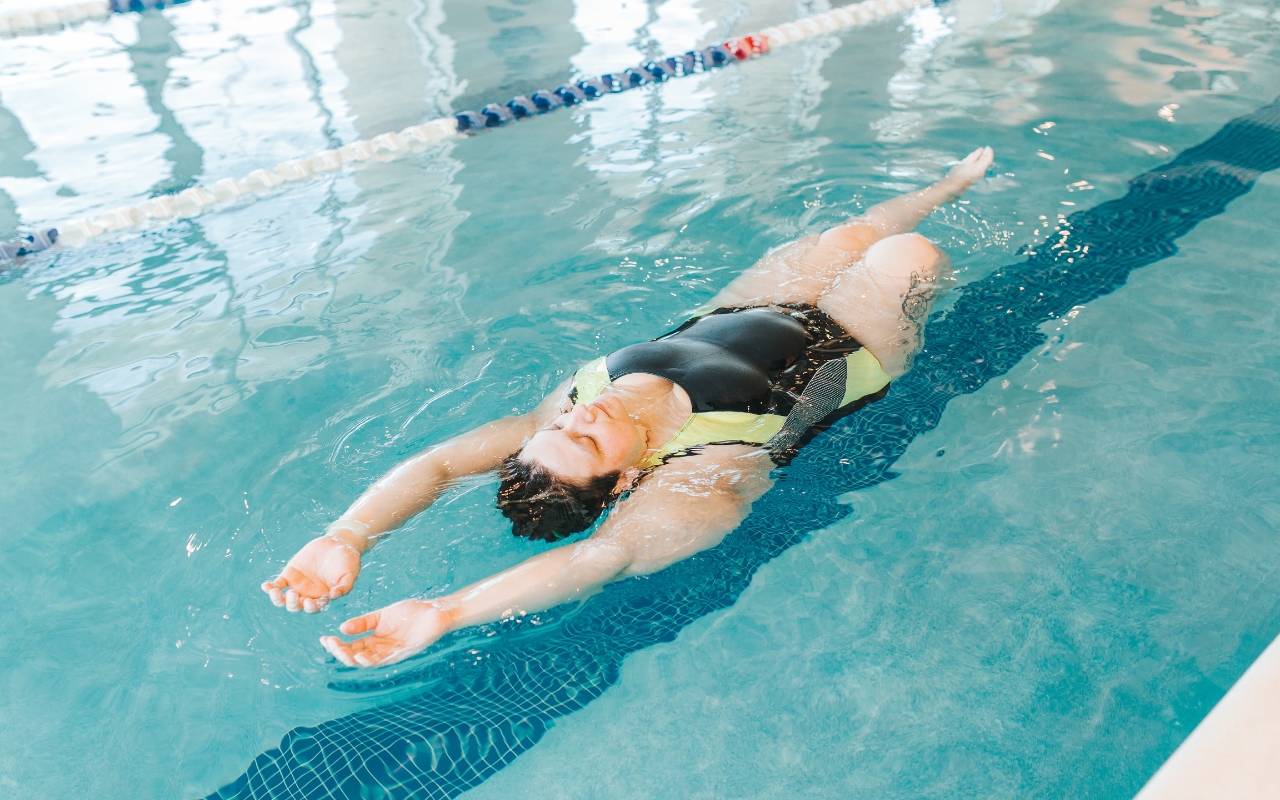Swimming, a versatile and enjoyable activity, offers myriad health benefits that span physical, mental, and emotional well-being. As a low-impact exercise, swimming is accessible to people of all ages and fitness levels, making it a standout option for anyone looking to improve their health holistically. This article delves into the extensive advantages of swimming, presenting a detailed look at why this exercise could be the most beneficial one you can adopt.
Cardiovascular Benefits
Swimming is renowned for its positive impact on cardiovascular health. Regular swimming sessions can help lower blood pressure and improve heart function. Research indicates that participating in swimming programs significantly reduces systolic blood pressure and resting heart rate, mainly when the swimming intensity is high. The water's resistance provides a unique challenge to the heart and circulatory system, mirroring the effects of land-based aerobic exercises like running or cycling but with less strain on the joints.
The heart health benefits extend to increasing high-density lipoprotein (HDL) cholesterol levels, commonly called “good” cholesterol. HDL helps remove other forms of cholesterol from the bloodstream, reducing the risk of cardiovascular diseases. Consistent swimming can help maintain a healthy lipid profile, contributing to cardiovascular health.
Mental Health and Mood Improvement
Beyond physical health, swimming also significantly influences mental well-being. The rhythmic and repetitive nature of swimming can be meditative, helping to reduce stress and anxiety. Studies have shown that swimming can improve mood and decrease feelings of depression and anxiety. Participants in swimming programs often report higher vigor-activity scores, indicating increased levels of energy and enthusiasm.
Swimming also encourages the release of endorphins, the body's natural feel-good hormones. These endorphins can provide a sense of euphoria, often called a “swimmer’s high,” which can significantly uplift one’s mood. Regular swimming sessions can be a powerful tool in managing mental health, offering a natural way to alleviate symptoms of stress and improve overall quality of life.
Lung Capacity and Respiratory Benefits
One of the standout benefits of swimming is its positive effect on lung capacity and respiratory efficiency. Swimming requires controlled and deep breathing, which can enhance lung function over time. Elite swimmers, for example, typically exhibit superior lung capacity compared to athletes in other sports, such as football players. This increased lung capacity allows for greater oxygen uptake and utilization, which benefits swimming and overall physical performance and endurance.
Swimming can also benefit individuals with respiratory conditions such as asthma. The humid environment of indoor pools can help reduce exercise-induced asthma symptoms. Moreover, the breathing techniques practiced in swimming can strengthen the muscles involved in respiration, providing long-term benefits for respiratory health.
Muscle Toning and Strength
Swimming is known for being a comprehensive full-body workout. Different swimming strokes target various muscle groups, aiding in overall muscle toning and strength. The water’s resistance—12 to 14 times greater than air—ensures that muscles engage more intensely than they would during conventional, land-based exercises.
The backstroke, for example, mainly engages the pectoral muscles, thighs, and glutes. The butterfly stroke significantly works the triceps, biceps, and shoulder muscles, while the breaststroke mainly focuses on lower body strength. Regularly practicing these strokes can lead to well-defined muscles and an enhanced physique, all while minimizing the risk of injury due to swimming's low-impact nature.
Joint Health and Low-Impact Exercise
One of the primary reasons swimming stands out as an exceptional exercise choice is its low-impact nature, which is highly beneficial for joint health. The buoyancy provided by water reduces the stress placed on joints, making swimming an ideal exercise for individuals with arthritis, fibromyalgia, or other conditions that cause joint pain or stiffness. The resistance of the water also provides a gentle yet effective way to strengthen muscles supporting the joints, helping to improve stability and reduce pain over time.
For those with severe joint pain or conditions like fibromyalgia, aquatic physical therapy can be a great starting point. This type of therapy involves performing exercises in a pool under the guidance of a physical therapist, gradually conditioning the body for more strenuous activities like lap swimming.
Bone Health
While swimming is predominantly known for its cardiovascular and muscular benefits, it also contributes positively to bone health. Although traditional weight-bearing exercises have long been recommended for improving bone density, research indicates that swimming can also play a role in maintaining bone health. A review published in BioMed Research International found that three to six hours of swimming per week can improve bone mineral density, particularly in postmenopausal women at a higher risk for osteoporosis.
The resistance provided by water during swimming exercises helps strengthen the muscles attached to bones, thereby stimulating bone growth and development. While it may not entirely replace high-impact activities, swimming offers a complementary exercise that supports overall bone health.
Weight Management and Calorie Burning
Swimming is an efficient calorie-burning exercise, making it an excellent option for weight management. Depending on the intensity and duration of the workout, a 160-pound person can burn approximately 423 calories per hour of moderate-paced swimming. For those who are heavier, the calorie burn can be even higher. This makes swimming comparable to other forms of aerobic exercise, such as running or cycling, in terms of calorie expenditure.
Swimming can also help manage body composition by reducing body fat and increasing lean muscle mass. Its combination of cardiovascular and resistance training makes it a powerful tool for those looking to lose weight while preserving muscle mass.
Benefits During Pregnancy
Swimming is a highly recommended exercise for pregnant women due to its low-impact nature and numerous health benefits for both the mother and the baby. Research suggests that swimming during pregnancy is safe and can help reduce the risk of preterm labor and congenital defects. The buoyancy of the water supports the additional weight and reduces the strain on the back and joints, which is particularly beneficial during the later stages of pregnancy.
Swimming can also help alleviate common pregnancy discomforts, such as swelling in the legs and feet, and it provides a gentle way to stay active throughout the pregnancy. However, pregnant women must consult their healthcare providers before starting any new exercise regimen to ensure it is safe for their specific condition.
Enhancing Immune Function
Regular swimming can bolster the immune system, making the body more resistant to illnesses and infections. Consistent physical activity, such as swimming, has been shown to improve the body's circulation, which allows immune cells to move through the body more effectively. This enhanced circulation enables the immune system to detect and attack pathogens more promptly, thereby reducing the risk of infections.
Furthermore, swimming can help manage stress, which is known to weaken the immune system. By reducing stress levels, swimming indirectly supports the immune system's functionality, ensuring that the body remains healthier and more resilient against diseases.
Improving Sleep Quality
Swimming has been linked to improved sleep quality, which is essential for overall health and well-being. The physical exertion and cardiovascular benefits of swimming help to tire the body, making it easier to fall asleep and stay asleep. Additionally, swimming can help regulate the body's circadian rhythm, promoting a more consistent sleep-wake cycle.
The relaxation induced by swimming, due to the rhythmic and repetitive motions, can also contribute to better sleep. Individuals who swim regularly often report experiencing deeper and more restful sleep, which in turn can improve daytime alertness and cognitive function.
Building Endurance and Stamina
Swimming is an excellent way to build endurance and stamina. The full-body workout engages multiple muscle groups and the cardiovascular system simultaneously, which helps to improve overall endurance. Swimmers often find that they can exercise for extended periods without feeling fatigued, which translates to better performance in other physical activities and daily tasks.
The water resistance requires constant effort, which helps build both muscular and cardiovascular endurance. Over time, swimmers can increase their workout intensity, duration, and distance, continuously challenging their bodies and improving their stamina.
Enhancing Flexibility and Coordination
Swimming requires a full range of motion from various joints and muscles, which can enhance flexibility. The different strokes and techniques involve stretching and lengthening movements that can improve the flexibility of the shoulders, hips, and legs. Regular swimming helps to maintain joint flexibility and reduce stiffness, making daily movements more comfortable and fluid.
In addition to flexibility, swimming also improves coordination. The combination of arm and leg movements and breathing techniques requires a high level of coordination. This enhanced coordination can positively affect overall motor skills, making other physical activities more accessible and more efficient.
Accessibility and Affordability
One significant advantage of swimming is its accessibility. Many communities have public pools, fitness centers, or natural bodies of water where people can swim. Swimming does not require expensive equipment; a swimsuit, goggles, and possibly a swim cap are all needed to get started. Some public pools and community centers offer swimming hours at reduced rates or even for free, making it an affordable exercise option.
For those concerned about the cost of joining a pool, some employers and health insurance providers offer reimbursements for fitness program memberships. This makes swimming an even more attractive option for those looking to stay healthy without breaking the bank.
Safety Tips and Getting Started
For beginners, it’s essential to start slow and gradually build up the intensity and duration of swimming sessions. Experts recommend starting with two to three swim workouts per week and progressively increasing the duration or distance as fitness improves. Learning different strokes and breathing techniques is also beneficial for getting the most out of the workout.
Safety is paramount when swimming, especially in open water. Using a safety buoy and swimming in designated areas with lifeguards on duty can help reduce the risk of accidents. Checking water quality and being aware of swimming conditions are also crucial for safe swimming practices.
Conclusion
Swimming is a multifaceted exercise that offers extensive benefits across various aspects of health and well-being. From improving cardiovascular health and lung capacity to enhancing muscle strength, bone health, and mental well-being, the advantages of swimming are comprehensive. Its low-impact nature makes it accessible to individuals of all ages and fitness levels, while its affordability ensures that it remains a feasible exercise option for many.
Whether you are a seasoned athlete or a beginner looking to start a new fitness regimen, swimming provides a holistic approach to improving health. By incorporating regular swimming sessions into your routine, you can enjoy the numerous physical and mental benefits this remarkable exercise offers. With proper safety measures and gradual progression, swimming can be a lifelong activity that promotes overall health and enhances quality of life.











